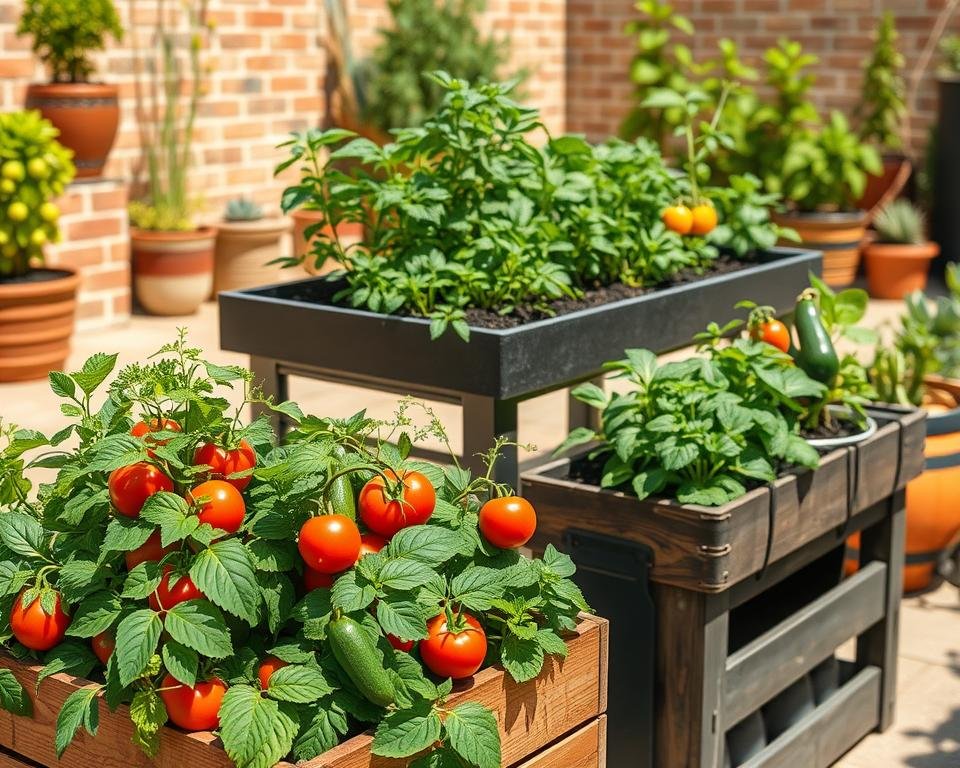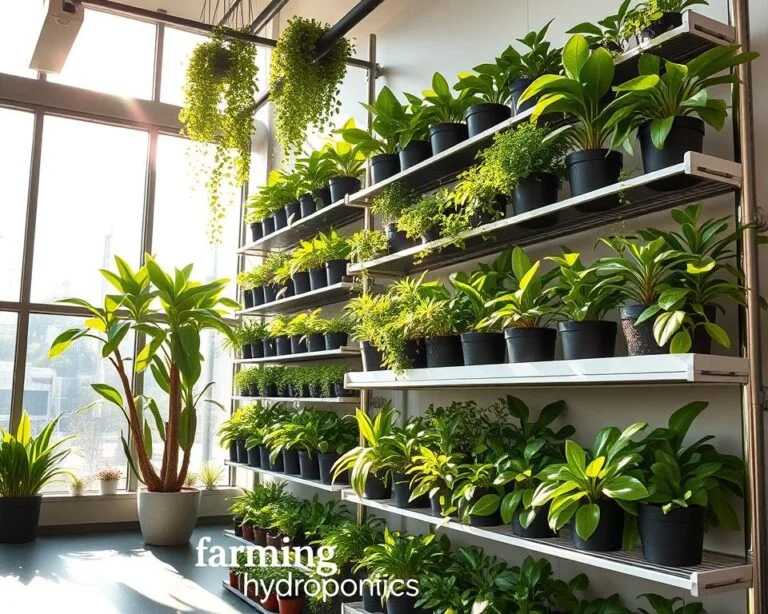Container Vegetable Gardens: Tips for Success
Imagine turning your small balcony or backyard into a garden. Container vegetable gardens change how city folks and those with little space grow food at home.
Urban gardening is more than a trend. It’s a smart way to grow your own veggies without needing lots of land. Whether you live in a city apartment or have a small patio, you can grow your own food.
Container gardening lets you move plants for better sunlight and to protect them from bad weather. You can make a garden that fits your space perfectly. Even the tiniest spots can become places to grow veggies.
Key Takeaways
- Container gardening works perfectly in limited urban spaces
- Vegetables need at least six hours of daily sunlight
- Choose containers with proper drainage and size
- Select vegetables suited to container growing
- Regular watering and fertilization are crucial for success
Getting Started with Container Vegetable Gardens
Patio gardening and apartment gardening have changed how city folks grow their own food. Container vegetables are a great choice for those with little outdoor space. They turn balconies, patios, and small yards into green spaces that produce fresh food.
Benefits of Container Gardening
Container vegetable gardens offer many benefits for gardeners:
- Flexibility in location and plant selection
- Perfect for urban living spaces
- Easy control of soil quality
- Mobility to adjust sunlight exposure
- Reduced risk of soil-borne diseases
Understanding Space Requirements
To grow container vegetables well, you need to know your space. The best container size is about 5 gallons, with a depth of 10-12 inches. Location matters – most veggies need 8+ hours of direct sunlight a day.
Basic Equipment Needed
To begin your container gardening, you’ll need these basics:
- Containers with drainage holes
- High-quality potting mix
- Fertilizer
- Watering can
- Hand trowel
- Gloves
Pro tip: For new gardeners, start small and experiment with 2-3 container vegetables in your first year.
Choosing the Right Containers for Your Vegetables
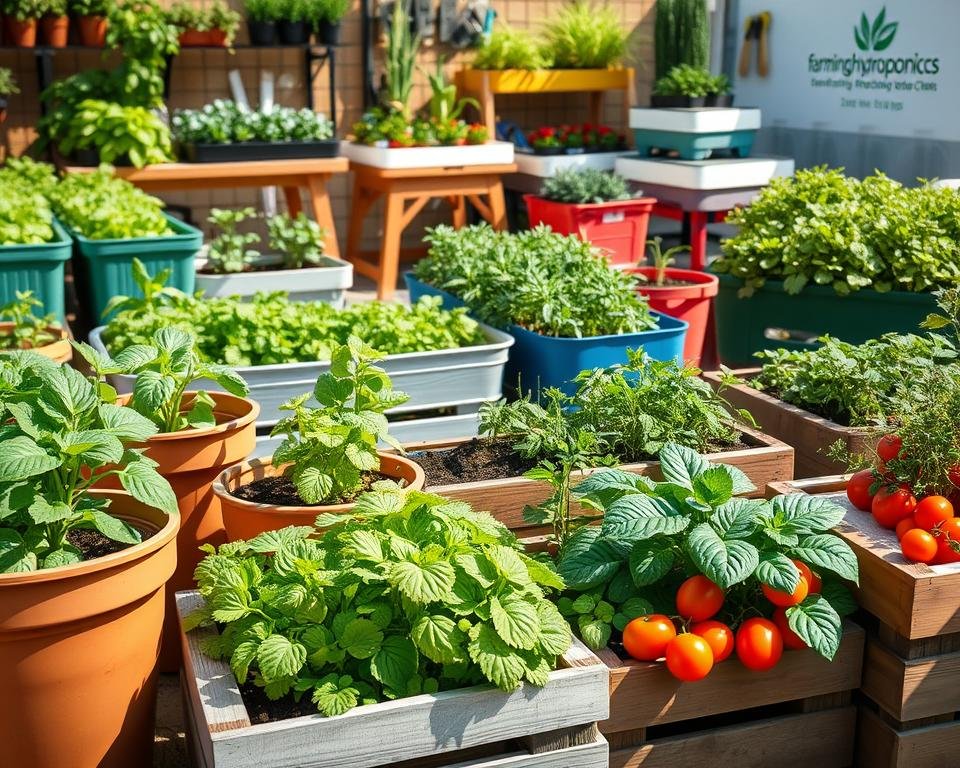
When starting your sustainable vegetable garden, picking the right container is key. The container you choose can greatly affect your vegetables’ growth and how much they produce.
Container size is very important for vegetable growth. Most vegetables need containers that are:
- At least 10 inches wide
- Minimum 12 inches deep
- Large enough to support root development
Different vegetables need different containers. Here’s a quick guide to help you choose:
- Tomatoes: 5-gallon pot per plant
- Peppers: 3-gallon container
- Lettuce: 5-gallon window box
- Cucumbers: 1-gallon pot per plant
Material selection is also important. Consider these options:
- Plastic (lightweight and affordable)
- Terracotta (breathable and classic)
- Metal (modern aesthetic)
- Ceramic (decorative)
- Fabric grow bags (excellent drainage)
Drainage is key for container vegetable gardening. Make sure your containers have many holes to avoid water-logging and root rot. Aim for 3-6 drainage holes in smaller containers and 6-8 holes in larger ones.
Pro tip: Always leave 2-3 inches of space between the soil and container rim for effective watering.
By choosing your containers wisely, you’ll create the best environment for your sustainable vegetable garden. This will help your vegetables grow well and produce more.
Essential Soil and Potting Mix Guidelines
Urban farming through container gardening needs careful soil quality attention. Your success in growing vegetables depends on the right potting mix. This mix supports robust plant growth and maximizes yield.
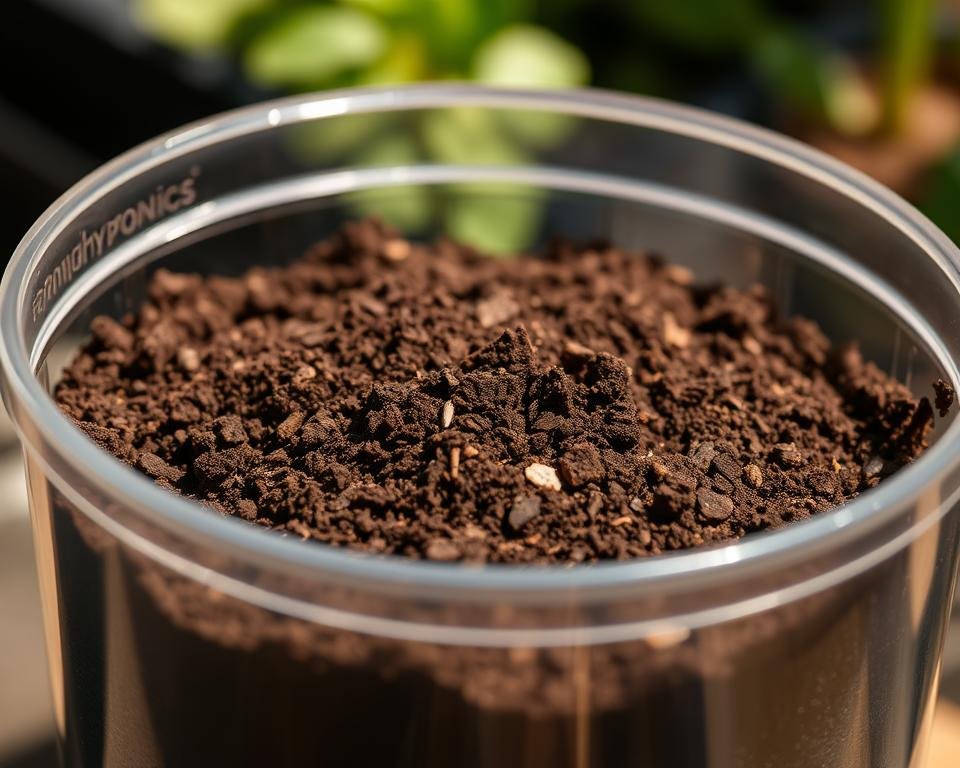
Creating the perfect soil blend is key for container gardening success. Unlike traditional garden soil, container gardens need a special mix. This mix provides optimal nutrition, drainage, and aeration.
Creating the Perfect Soil Blend
A high-quality potting mix should include:
- 1 bushel vermiculite
- 1 bushel peat moss
- 1¼ cups dolomitic lime
- ½ cup 20% superphosphate
- 1 cup 5-10-5 fertilizer
Understanding Soil Drainage
Proper drainage prevents root rot and ensures healthy plant growth. Your container gardening tips should always prioritize soil that allows water to pass through. It should retain essential moisture.
| Soil Component | Purpose | Percentage |
|---|---|---|
| Vermiculite | Moisture Retention | 33% |
| Peat Moss | Water Absorption | 33% |
| Compost | Nutrient Supply | 33% |
Importance of Soil Quality
In urban farming, soil quality directly impacts vegetable production. Adding up to 50% compost to your potting mix can provide essential nutrients for initial plant growth. After 3-4 weeks, supplement with liquid fertilizer weekly to maintain plant health.
Remember, container gardening offers flexibility in soil management. You can customize nutrients and create ideal growing conditions for your vegetables.
Best Vegetables for Container Growing
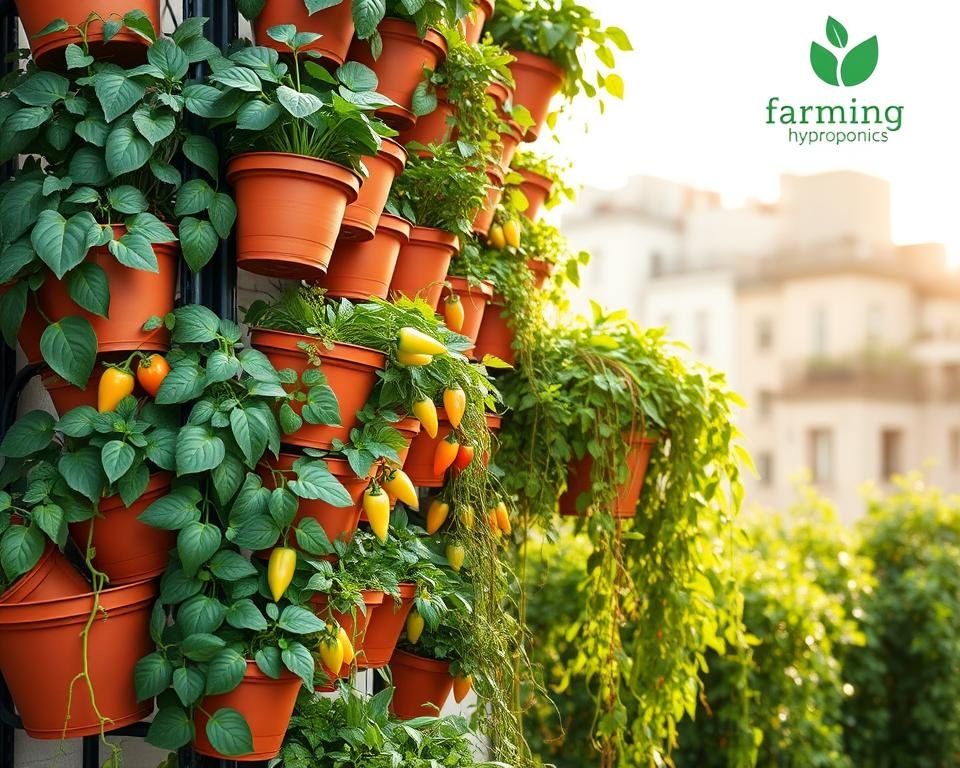
Starting a balcony garden means picking the right plants. Not all plants are good for small spaces. Some are perfect for growing vertically.
With the right plants, your container garden can be very productive. Here are some top picks:
- Tomatoes: Choose dwarf or bush varieties that need at least a 10-gallon container
- Peppers: They do well in 5-gallon containers with warm soil
- Leafy Greens: Lettuce, spinach, and arugula grow well in small 2-gallon containers
- Root Vegetables: Carrots and radishes need deeper containers (10-12 inches)
- Herbs: Basil, mint, and cilantro adapt easily to container environments
When planning your vertical garden, pick plants made for containers. Fingerling potatoes, Swiss chard, and bush beans are great for small spaces.
“The key to successful container gardening is choosing the right plants and providing them with appropriate care.” – Garden Expert
For your balcony garden, try companion planting. For example, basil near tomatoes can make flavors better and keep pests away.
- Use containers with proper drainage
- Select vegetables suited to your climate
- Rotate crops to maintain soil health
With the right plants and care, even the smallest space can become a productive garden.
Watering and Maintenance Strategies
Starting a sustainable urban garden is all about watering and care. Container gardens need special attention, more so in the summer. Knowing what your plants need can turn a small space into a lush garden.
Watering right is key to a successful container garden. Check the soil moisture by feeling the top 1-2 inches. If it’s dry, it’s time to water. Most plants need water every day in summer, with small pots needing more in very hot weather.
Keep your garden healthy with regular care. Different veggies need different amounts of water. Tomatoes and cucumbers like moist soil, while herbs like basil and thyme prefer drier soil. Self-watering planters can help keep the soil just right.
Watering in the morning is best. It helps prevent water loss and diseases. Avoid getting water on the leaves to prevent diseases. In very hot weather, you might need to water twice a day. Also, remember that container gardens use up nutrients fast. Use balanced fertilizers every two weeks to keep your garden growing well.

